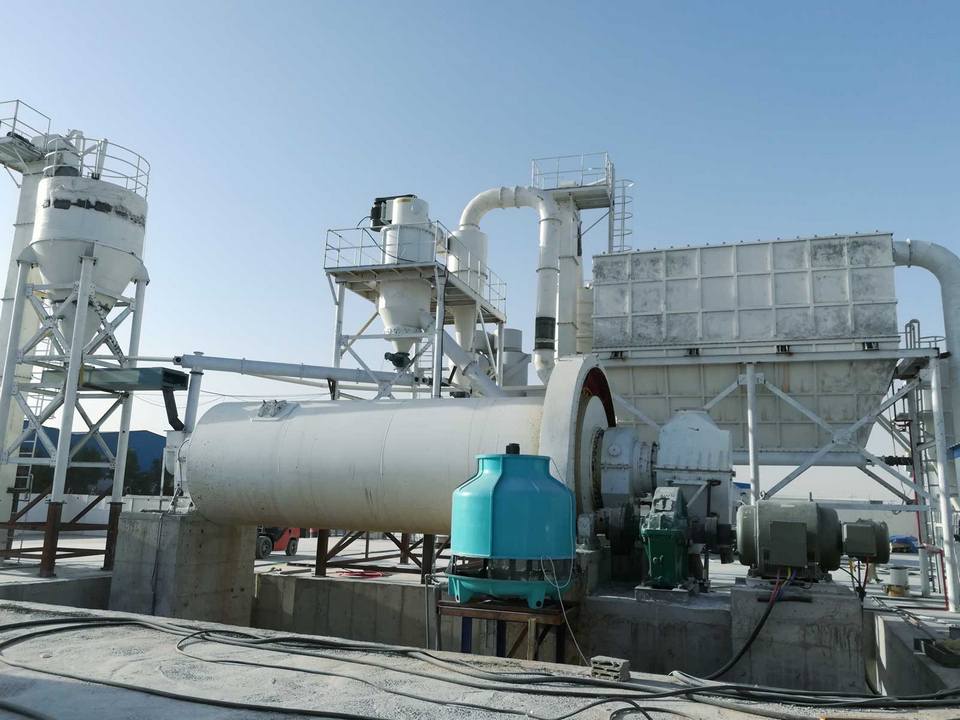How to solve the sudden failure of the ball mill
Ball mill equipment is the equipment that accounts for a considerable investment in the entire concentrator, accounting for more than 50%. Therefore, ensuring the normal operation of the ball mill is a necessary condition to ensure the normal production of the entire concentrator. However, when the ball mill is in use, some sudden failures often occur, which affects production efficiency. So how to effectively solve or avoid these sudden failures?
Sudden failures of ball mills are generally caused by multiple reasons such as long-term high-speed operation and improper operation.

- The stator coil of the ball mill is broken down
In the entire system of the ball mill, there will be iron-containing dust in the air around the material. After a long time of operation, the iron-containing dust will adhere to the coil of the ball mill stator. When it reaches a certain thickness, it will cause the surface of the stator coil. A short-circuit discharge situation has occurred. When the short-circuit phenomenon occurs many times, the insulator of the coil will be damaged, causing the phenomenon of sparking and breakdown, causing the ball mill to stop running. Without a backup motor, the grinding work is difficult to continue. At this point, the breakdown coil should be cut off immediately, scientific protection measures should be adopted, and the ball mill can be restarted to continue production.
- The sliding shaft of the ball mill is scratched
After the sliding shaft of the ball mill has been worn for a long time and reaches a certain thickness, it is difficult to combine the spherical body of the ball mill with the tile lining, and scratches will occur. Generally, this kind of situation occurs because the clinker temperature of the hollow shaft is too high, and the temperature of the outer surface of the hollow shaft is also high, which causes the lubricating oil to be too diluted, loses viscosity, and is difficult to form a good oil film, resulting in bushings and journals. Friction generates heat and heats up rapidly, causing the surface of the tile lining to be melted and scratched.
If there is no spare spherical tile-hour, you can only stop the machine for inspection and repair the tile surface before continuing to use it. The smoothness of the scratched surface can be restored by frustrating, cutting, grinding, etc., while the undamaged part needs to be scraped out of a micro oil groove to repair the tile. And unload the materials and grinding media in the ball mill, and use manual methods to rotate the barrel for no-load grinding. When it reaches a certain level, it will run in conjunction with the transmission part for a no-load test, and then load the materials and grinding media into the ball mill for load operation, so that the ball mill can return to normal operation.
- The barrel screw and hollow shaft of the ball mill are broken
In the process of connecting the cylinder body and the hollow shaft of the ball mill, the cylinder body needs to be drilled through holes with the flange, and the pins are connected through the turnbuckles. The through holes only need ordinary screws to connect. The reamed holes are mainly used for limiting and Positioning role.
After long-term operation of the ball mill, due to thermal expansion and contraction, distortion, high temperature corrosion, water vapor corrosion, etc., the matching size of the pin hole and the reamed hole will change, and the phenomenon of looseness will occur, which makes it difficult to achieve position limitation. Because of the twisting, the screw starts to loosen, causing the cylinder and the hollow shaft to periodically displace. If the screw is stretched for a long time, the screw will break.
According to many years of experience, after this kind of failure occurs, the screw can be changed to a hinge pin for connection. At present, there has been no phenomenon of hinge pin fracture.
- The temperature rise of the sliding bearing of the ball mill
During the operation of the ball mill, the base part of its head slides and the temperature of the bearing suddenly rises. This phenomenon is mostly caused by the sinking of the base part of the head, the overall movement of the grinding body and the tilting. The spherical bush shoulder of the ball mill and the flange root of the hollow shaft undergo squeezing contact and rotating friction, which generates heat and causes the temperature to rise rapidly. high. This situation may cause the ball mill to tilt. The meshing of the large ring gear and the pinion gear will form an axial angle, which will cut the teeth each other, which will increase the difficulty of meshing, cause loud noise and increase the vibration, and will cause the ball mill to stop in severe cases.
After this phenomenon occurs, it is necessary to stop the machine for inspection, weld and lengthen the grounding bolts, wedge the shim iron, raise the bearing seat, and control the temperature of the sliding bearing and the sound of the transmission part.
